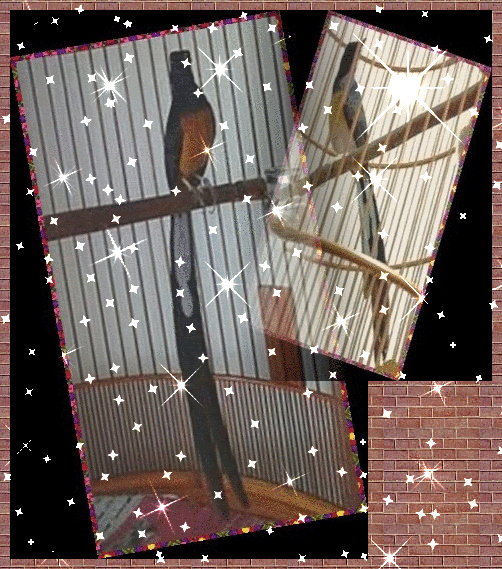Feather pulling is sometimes attributed to 'heatiness' due to feeding of mealworms but I also do not believe that this is so. I had come across many occasions when the owners had stopped feeding mealworms to their birds that were having this problem but the feather pulling did not cease. On several occasions, I had observed that the birds exhibiting this behaviour were also fed mostly on a low protein, grain based dry food with very few mealworms as part of the diet. I would think that if diet has anything to do with this behavior, a diet which is too low in protein will be more likely to trigger this than one that provides a substantial amount of protein from the mealworms. Feathers are made of keratin, a type of protein. Although it may sound remote, there may be a possibility that a diet too low in protein may drive the instinct to seek out an alternative source for this nutrient, resulting in the bird pecking at its own feathers, especially the soft down feathers.
Lack of humidity is very often the cause of shamas pulling out down feathers, usually those near to and above the thighs. Moving the bird to an area of the house that has sufficient humidity will often solve this problem. Spraying the bird lightly during bath time will help in some cases.
The cage that is placed in an area of the house that do not have sufficient light during the day could also sometimes trigger this behaviour of feather pulling. Exposing captive shamas to prolonged lighting during the night such as bright ceiling lights being turned on late into the night is equally unnatural and may also result in abnormal hormonal changes which may bring about the onset of a premature molt or cause feather pulling of the down feathers.
Not all shamas are suitable to be kept as captive birds. Some male birds will respond violently during an acute rush of testosterone such as during a chai session, setting off a self destructive behaviour of tugging and pulling at their own wing and tail feathers. Once started, this habit of attacking its own feathers will usually recur each time the bird is into confrontation mode.
Feather pulling in captive shamas may also be due to bacterial, fungal, viral or parasitic causes.







.JPG)

.JPG)













